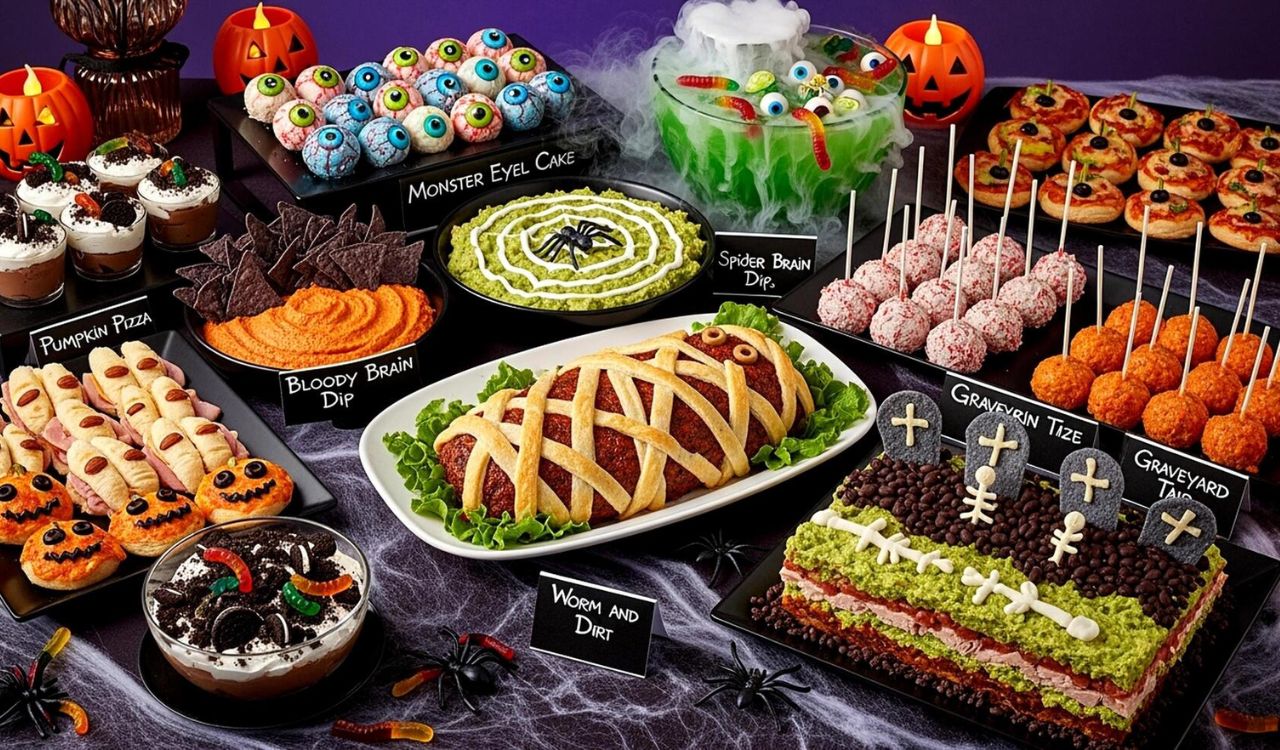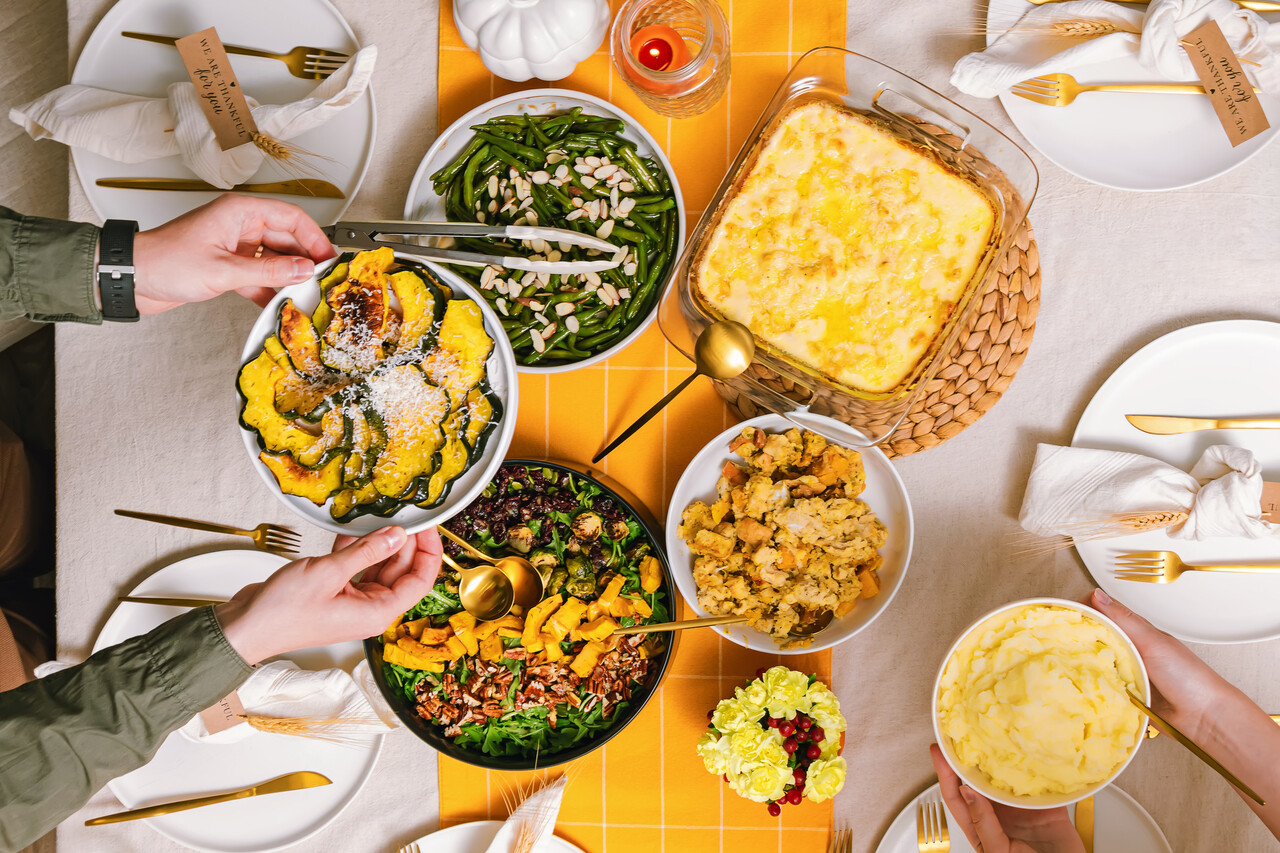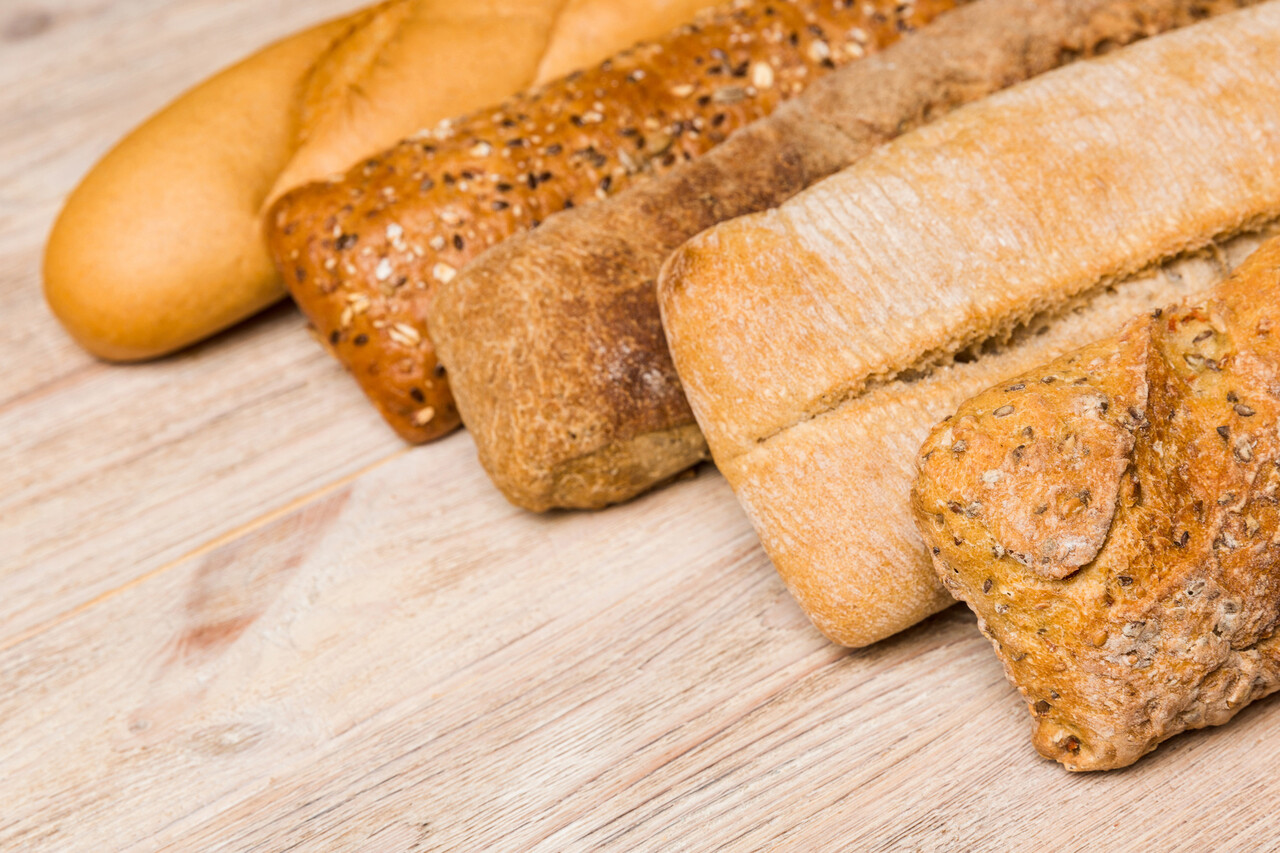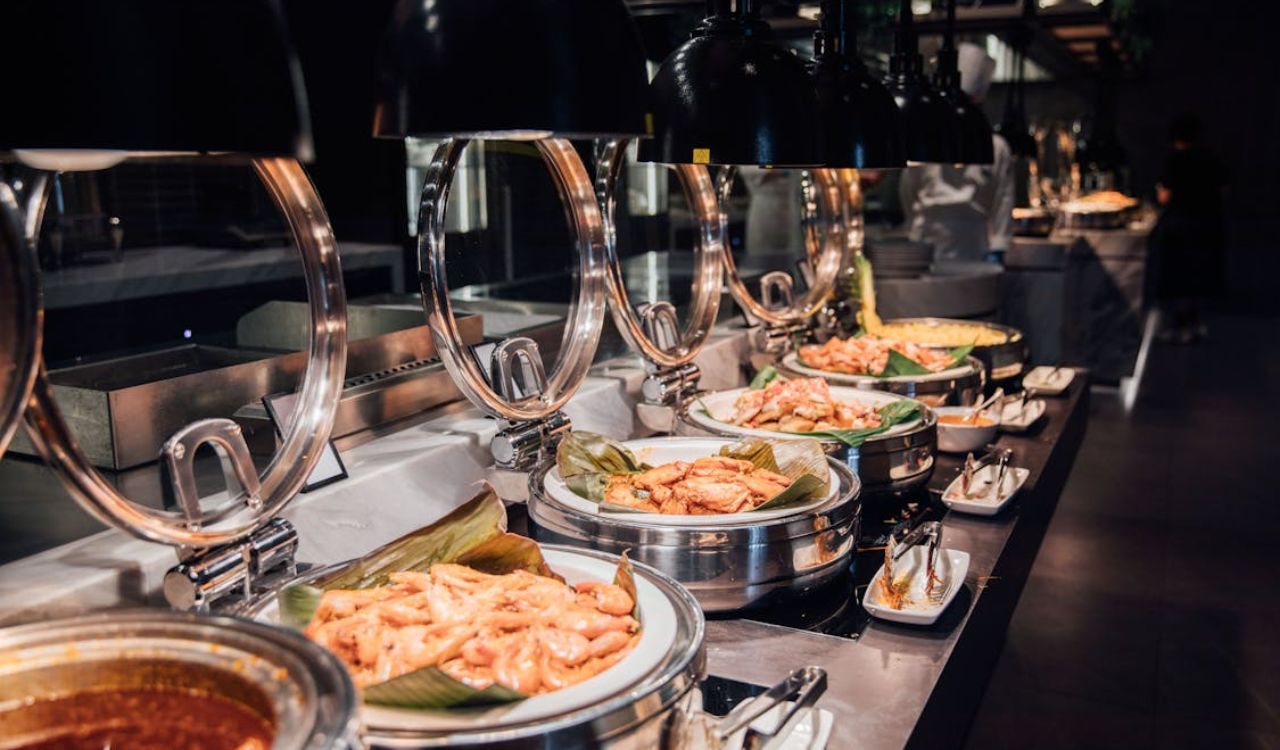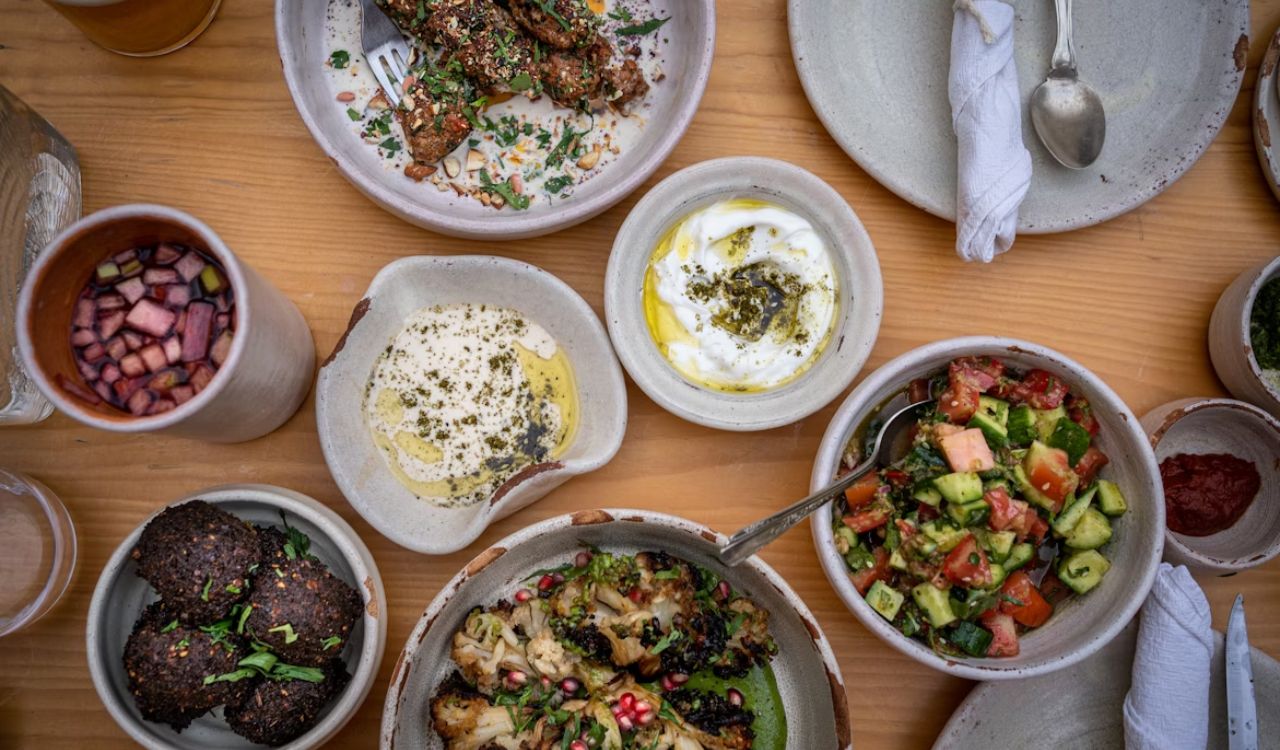How to Make the Best Garlic Parmesan chicken pasta
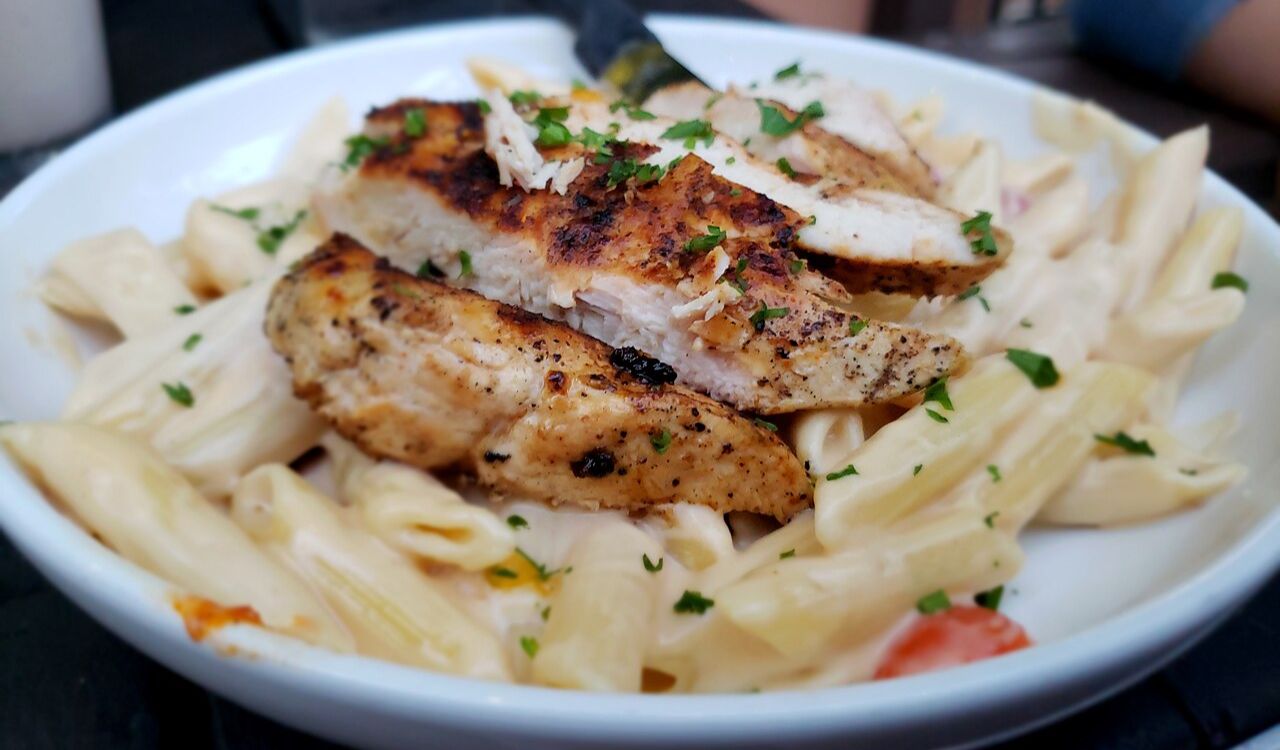
Garlic Parmesan chicken pasta hits that perfect middle ground between weeknight-easy and restaurant-level cozy. It is creamy without feeling heavy, loaded with savory depth from real Parmesan and plenty of garlic, and flexible enough to fit your pantry and schedule.
The best part is that you can take two clear routes and both taste fantastic. One path leans creamy and one-pan simple. The other skips cream entirely and relies on Parmesan, butter, and starchy pasta water for a glossy, silky sauce.
Below is a data-backed, step-by-step guide that blends pro techniques from trusted kitchen sources into one foolproof playbook.
The Ingredients That Actually Matter
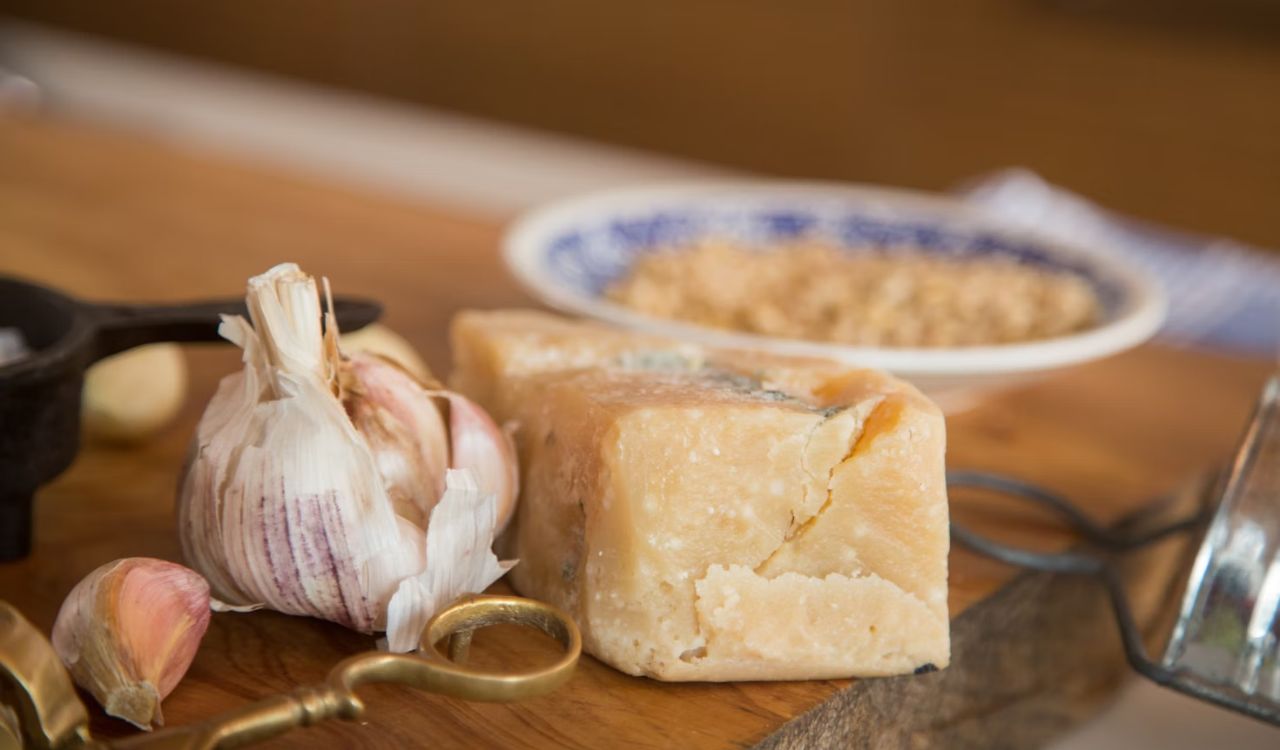
Great results come from a short list of smart choices. The goal is flavor, cling, and balance.
- Chicken: Boneless, skinless breasts work beautifully, especially if you pound or butterfly to about 1.2 to 1.9 centimeters thick so they cook quickly and evenly. That thickness target appears across reliable methods and helps you reach 74°C safely at the center without drying the exterior. Season simply with salt, pepper, and an Italian-style blend or garlic powder and paprika for gentle warmth.
- Pasta: Shapes that grab sauce are ideal. Penne and linguine are standouts because ridges and long strands both hold a creamy garlic Parmesan sauce very well.
- Parmesan: Freshly and finely grated is non-negotiable. Very fine shreds melt smoothly and prevent clumping, a point emphasized by multiple recipe developers. Pre-shredded cheese often contains anti-caking agents that inhibit melting.
- Liquid base: You have two valid approaches. One-pan cream-enriched sauce uses chicken broth plus a finishing splash of heavy cream. A no-cream method relies on reduced white wine, butter, and starchy pasta water to emulsify with Parmesan into a glossy sauce.
- Aromatics and balance: Fresh garlic is the star. Onion adds gentle sweetness. Lemon juice or a quick splash of acid keeps richness in line and brightens the finish.
- Fat: A neutral high-heat oil for searing chicken helps browning. Butter enriches the sauce and carries garlic flavor.
Step-by-Step: Creamy One-Pan Version
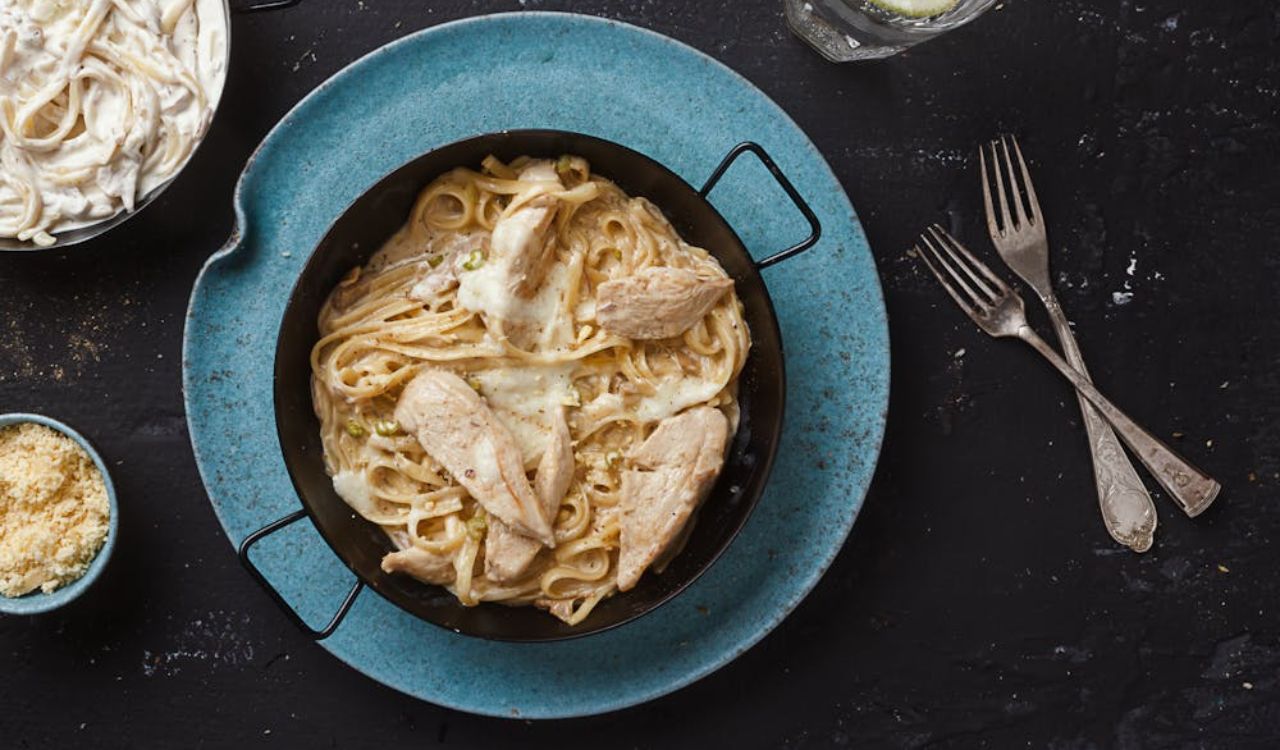
This is your weeknight staple. Everything happens in one pan, cleanup stays easy, and the pasta cooks in flavorful broth instead of water.
- Prep the chicken: Pat dry. Pound or butterfly to an even thickness around 1.2 to 1.9 centimeters. Season both sides with salt, pepper, Italian seasoning, and a pinch of paprika.
- Preheat and sear: Heat a stainless steel skillet over medium heat until a splash of water forms dancing beads rather than instantly evaporating. Add oil and sear the chicken 3 to 5 minutes per side, until golden and 74°C inside. Rest on a plate.
- Build the base: Lower the heat slightly. Add a small knob of butter and a little oil, then cook diced onion with a pinch of salt until translucent. Stir in minced garlic and cook about 1 minute until fragrant.
- Deglaze and simmer pasta: Pour in chicken broth, scraping up browned bits. Bring to a lively simmer. Add dry pasta and stir so most pieces are submerged. Cover and cook until al dente, usually around 10 minutes, stirring once or twice.
- Finish off heat: Turn off the heat. Stir in finely grated Parmesan, then a splash of heavy cream. Toss until smooth and lightly thickened. Adjust salt and pepper.
- Slice and return chicken: Slice rested chicken into strips and fold into the pasta. Shower with chopped parsley and serve.
Why this works: Searing first delivers fond that becomes flavor when deglazed. Cooking pasta in broth builds body and flavor into the sauce. Pulling the pan off the heat before adding cheese and cream keeps proteins from tightening and prevents grainy sauces.
Step-by-Step: No-Cream, Glossy Parmesan Emulsion
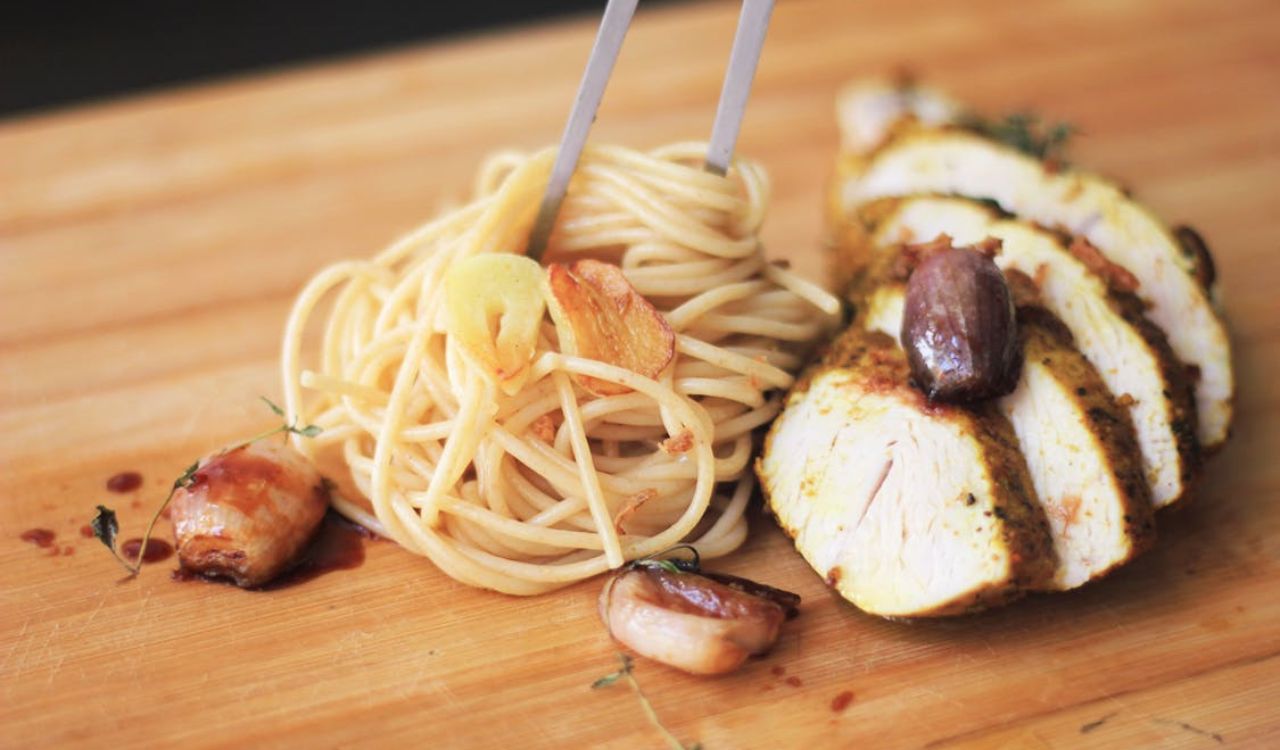
Want rich but not heavy? This method uses butter, wine, and starchy water to create a silky, restaurant-style finish.
- Cook the pasta: Boil in well-salted water. Stop one minute shy of al dente and reserve at least 240 milliliters of pasta water.
- Pan-fry the chicken: Pound to even thickness, season, and lightly dust in flour if you want a thin golden crust. Sear in oil about 2 minutes per side, or until cooked through. Tent and rest.
- Infuse the oil with garlic: Start sliced garlic in cool olive oil, then bring to a gentle sizzle so it softens and perfumes without browning.
- Reduce wine: Add dry white wine and simmer to reduce by roughly half.
- Mount with butter: Whisk in cold butter a cube at a time to build a stable emulsion.
- Add pasta water: Splash in reserved starchy water and whisk to loosen and shine the sauce.
- Marry pasta and cheese: Add the hot pasta, spread into an even layer, sprinkle very finely grated Parmesan over the top, let it just begin to melt, then toss and spin with tongs until glossy and fully emulsified. Season and finish with chopped parsley and a squeeze of lemon if you like. Top with sliced chicken.
Why this works: The combination of butterfat, dissolved starch, and very fine Parmesan strands forms an emulsion that clings to pasta. Gentle heat is key so the cheese melts into the sauce rather than clumping.
Pro Techniques That Change Everything
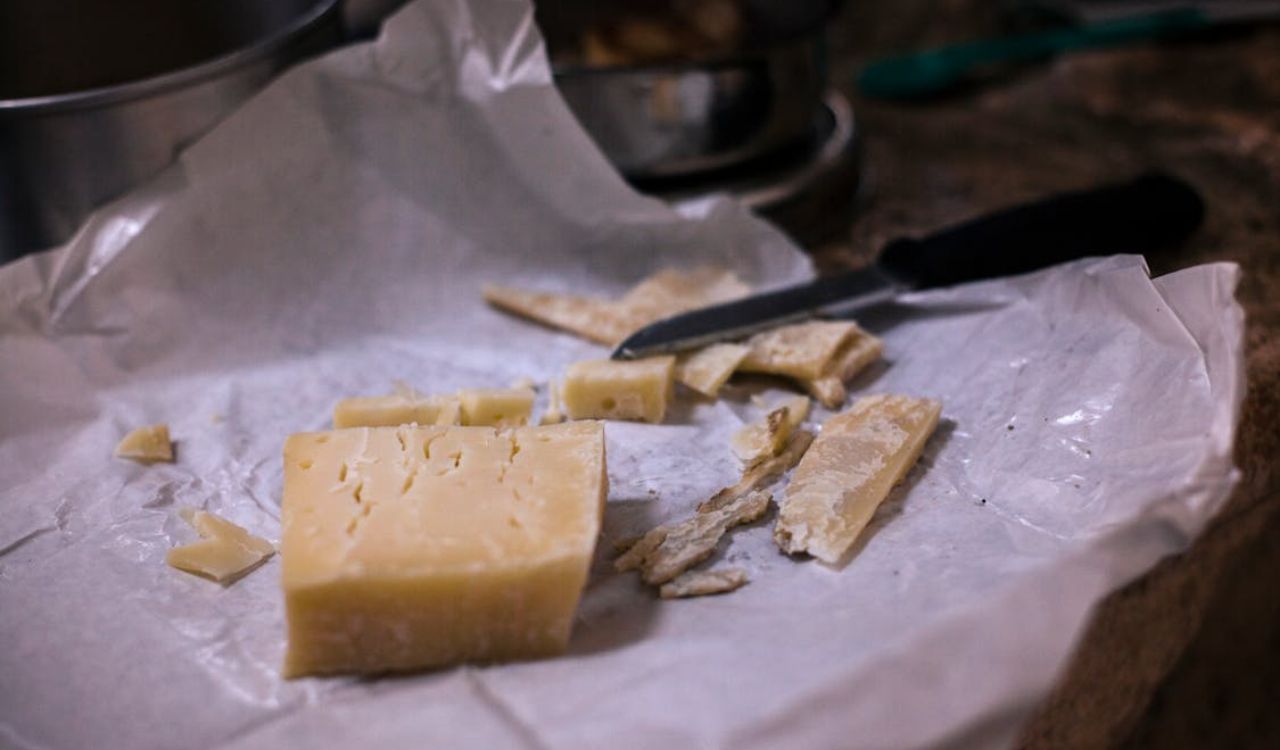
A few small habits deliver big consistency.
- Preheat stainless steel right: The water-bead test helps you know when to add oil so the chicken releases naturally and browns instead of sticking.
- Grate Parmesan ultra-fine: Use a microplane or the star side of a box grater for powdery shreds that disappear into the sauce. This directly reduces clumping risk.
- Mind the dairy: For the cream version, add cheese and cream with the burner off. Gentle residual heat brings the sauce together without breaking.
- Use pasta water wisely: Even in the cream method, a small splash of starchy water can loosen a sauce that is too tight while helping it cling to pasta.
- Balance with acid: A teaspoon or two of lemon juice brightens richness and keeps the dish from feeling heavy.
- Cook to temperature: Slice into the thickest part or use a thermometer for 74°C so the chicken stays juicy without guesswork.
Smart Variations and Add-Ins
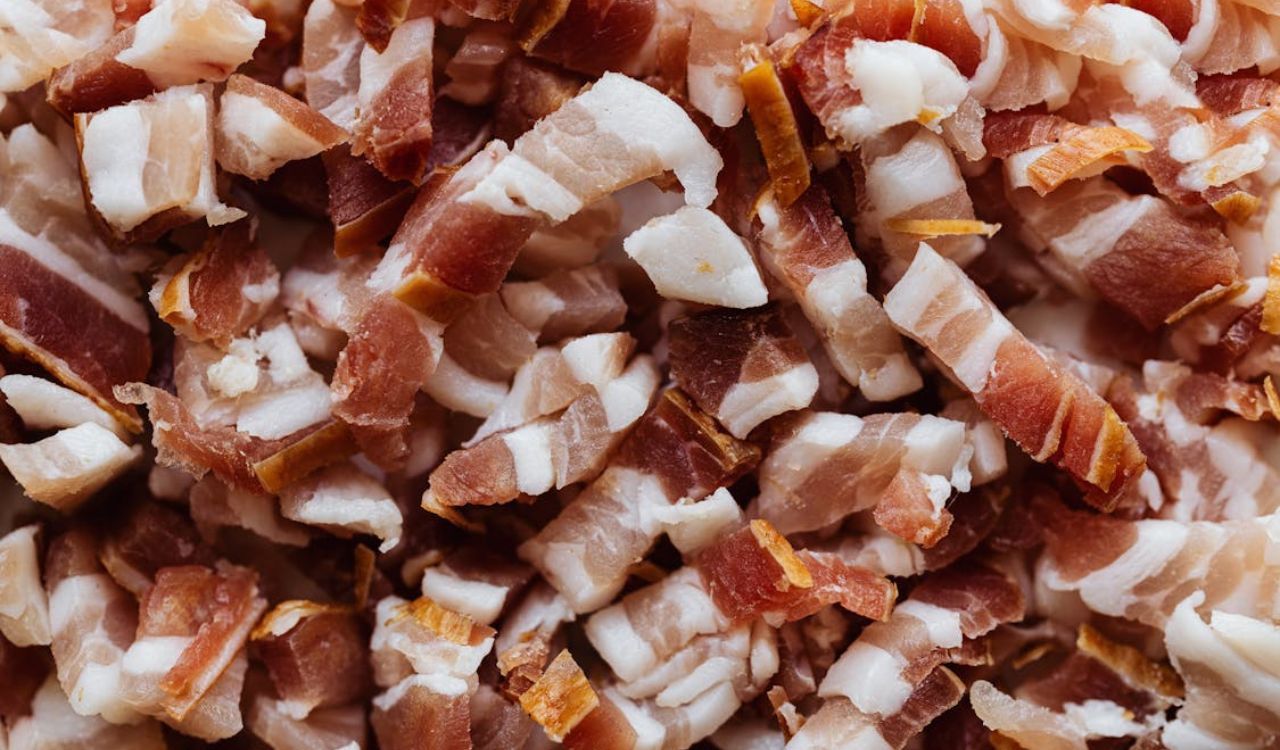
These swaps are proven and keep texture in balance.
- Greens in the pan: Stir baby spinach into the hot sauce just before serving. It wilts in seconds and boosts color and nutrients.
- Vegetable bonus: Add peas, asparagus, or mushrooms with the onion step. They will soften while the sauce builds.
- Bacon or chorizo: Crisp a handful first, then build your sauce in the rendered fat plus a little oil for smoky depth.
- Gluten-free path: Swap your favorite gluten-free pasta and adjust the timing. Many brands cook faster; aim for al dente, not mushy.
- Lighter richness: Replace cream with crème fraîche in the cream method for a tangier profile. Warm gently to prevent splitting if using a lower-fat version.
Make-Ahead, Leftovers, and Reheating
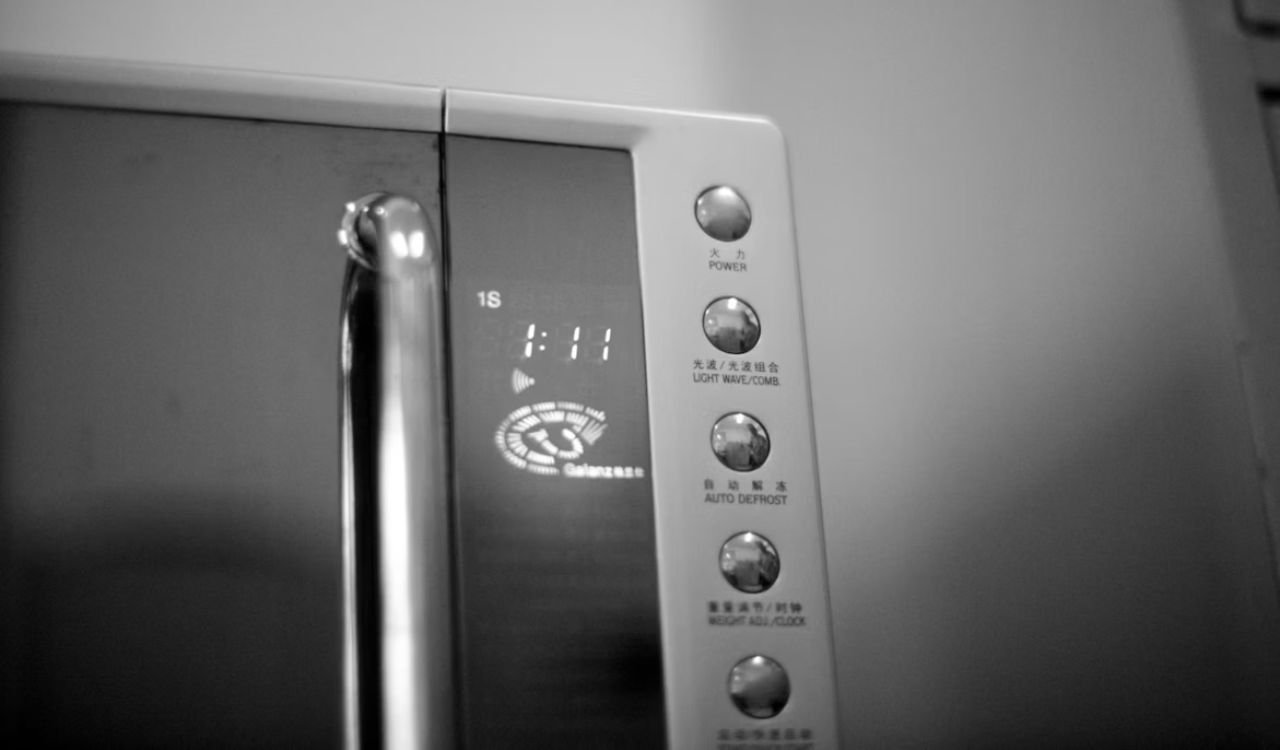
Pasta dishes shine when served immediately, but leftovers can be excellent with a little care.
- Storage: Cool quickly, then refrigerate in an airtight container. The one-pan cream version and the no-cream emulsion both keep well for about two days.
- Reheat: Microwave gently, stirring once or twice. Add a spoonful of water, stock, or a splash of cream to loosen, since pasta will absorb sauce as it rests.
- Cold option: The creamy one-pan version tastes surprisingly good cold. If you enjoy that, consider it tomorrow’s desk lunch with a handful of arugula on top.
Common Mistakes To Avoid
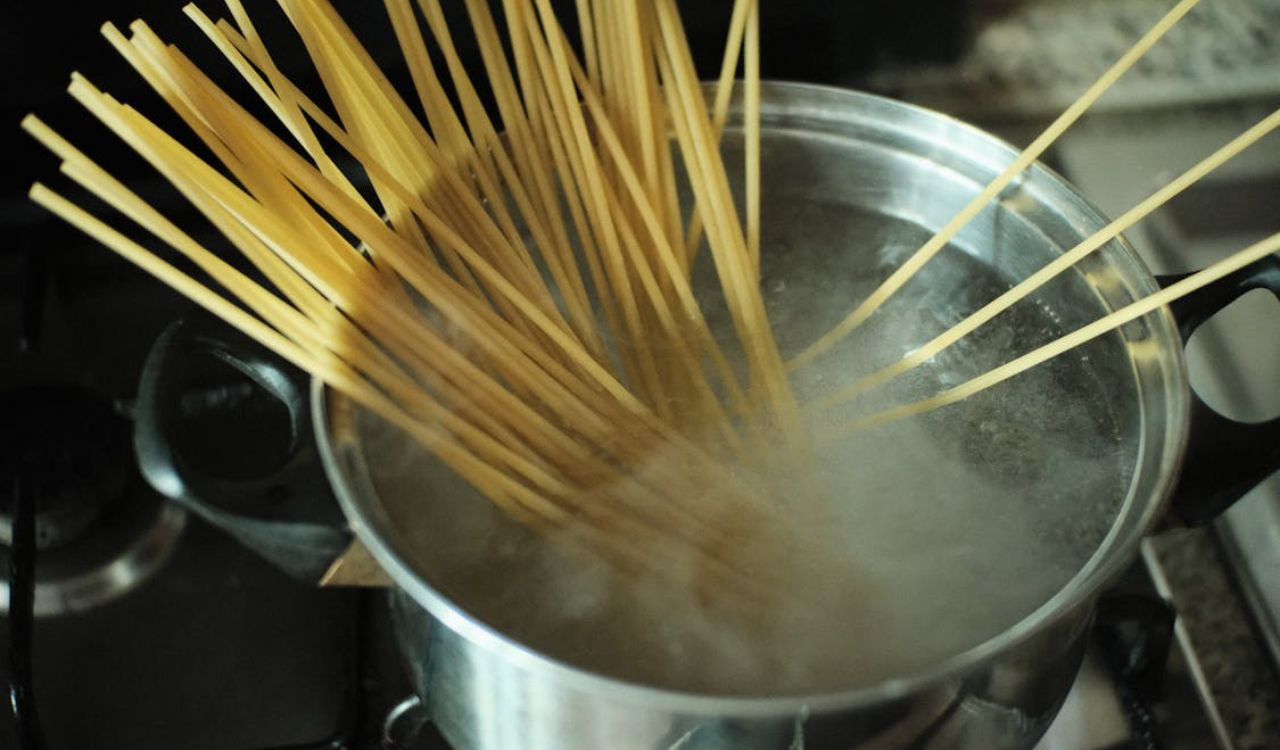
- Overcrowding the pan for searing: Steams instead of browns. Sear in batches if needed.
- Too hot for cheese: High heat makes Parmesan seize and turn grainy. Kill the flame before stirring it in.
- Using pre-shredded Parmesan: Anti-caking starches block smooth melting. Freshly grate it very fine.
- Undersalting the pasta water: The pasta itself should taste seasoned before it hits the sauce.
- Skipping acid: Even a small splash of lemon balances cream, butter, and cheese.
A Quick Blueprint You Can Save
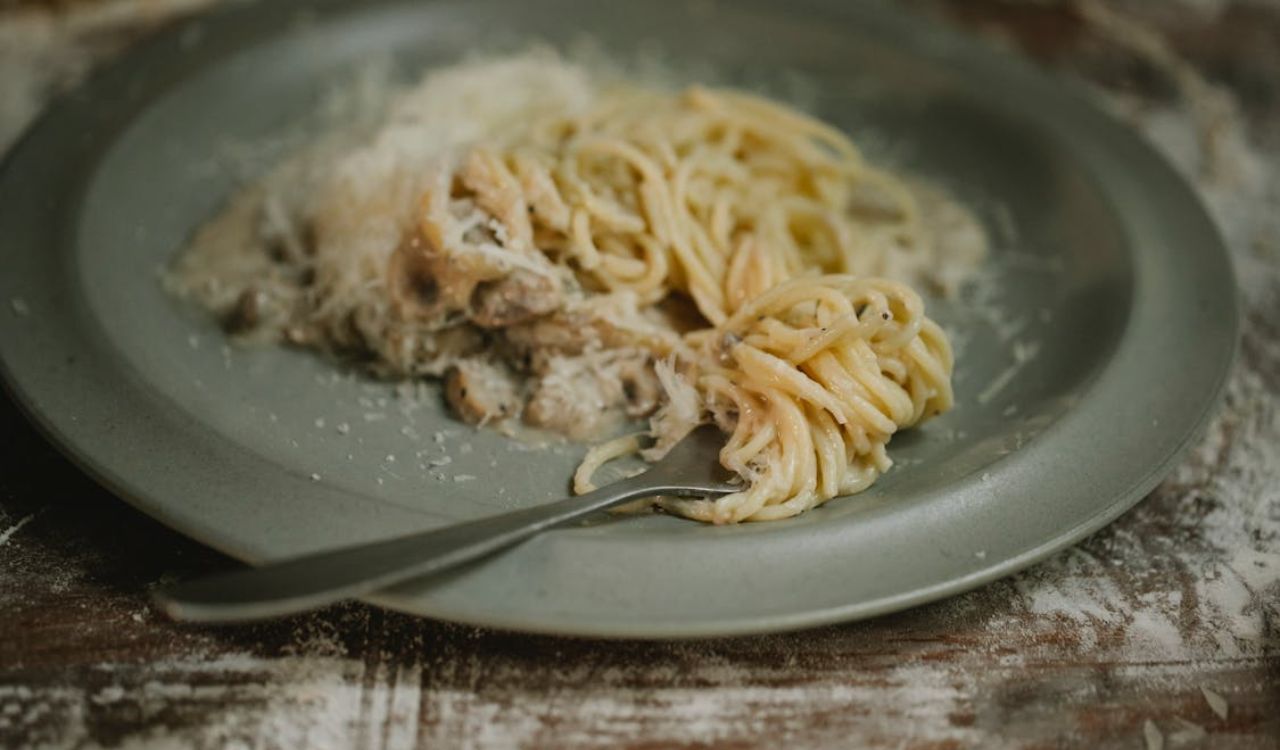
- Sear seasoned, even-thickness chicken to 74°C. Rest.
- For cream method: sweat onion and garlic, simmer broth with pasta until al dente, remove from heat, add fine Parmesan and cream, season, fold in chicken, finish with parsley.
- For no-cream method: infuse oil with garlic, reduce wine, mount with butter, add starchy water, toss in pasta, sprinkle and melt Parmesan, emulsify until glossy, season, add lemon and parsley, top with chicken.
Master either route and you will have a dependable, crowd-pleasing dinner in your pocket. The creamy path is perfect for one-pan convenience. The no-cream emulsion gives you a lighter feel with restaurant polish. Both honor the same simple truth: garlic sings, Parmesan melts, and pasta carries it all to the finish line.
References
- Garlic Parmesan Chicken and Pasta (One-Pan)- MunchinWithMaddie.blog
- Garlic Parmesan Chicken Pasta- KitchenSanctuary.com
- Garlic parmesan pasta with chicken (no cream)- TheBurntButterTable.com


